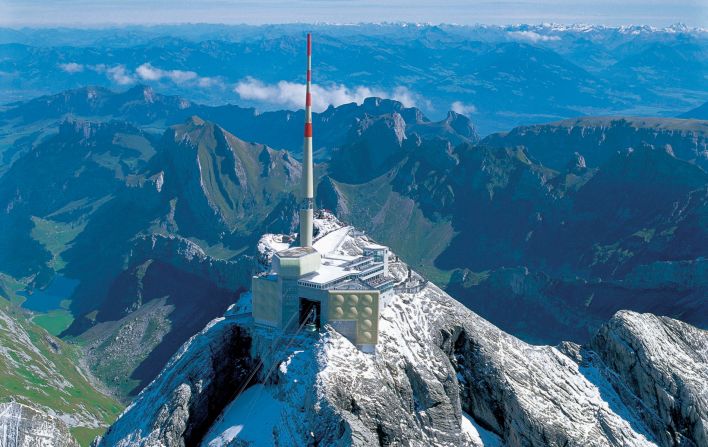
An experimental laser will soon be tested at S?ntis, in the Swiss Alps, where the radio transmission tower at its summit is hit by lightning hundreds of times each year.

The laser will be fired at clouds to discharge lightning in a controlled way. Testing at S?ntis was originally planned for 2020, but was delayed by the pandemic, allowing the team to run more extensive tests in a Paris lab.

High winds at the summit of S?ntis mean concrete blocks weighing a total of 18 tons are needed to anchor the laser machinery, housed inside a custom-sized shipping container.

A helicopter transported the laser components to the transmission tower site in late May 2021.

"This is one of the places in Europe that's struck by lightning the most," said Wolf of the test site, "so it's an ideal place to make our proof-of-concept experiments."

"It's a huge laser -- it takes a large truck to transport it, which is why it was built like a puzzle, with modules that can be put together on site," said Swiss physicist Jean-Pierre Wolf, who is leading the research.

The project is the work of an EU-funded consortium which includes universities in Paris and Lausanne, as well as rocket manufacturer ArianeGroup and the maker of the laser, German high-tech company Trumpf.

Wolf isn't the only scientist attempting to use electricity to affect clouds. Scientists from the University of Reading, in the UK, are using drones to apply a charge to clouds to make them rain.

This kind of cloud charging could eventually be combined with cloud seeding -- an existing technology where planes inject particles into clouds to encourage rain. Pictured, an aircraft fitted with canisters of cloud seeding silver iodide, sodium chloride and potassium chloride at Jakkur Airport in the Indian city of Bangalore, in August 2017.
